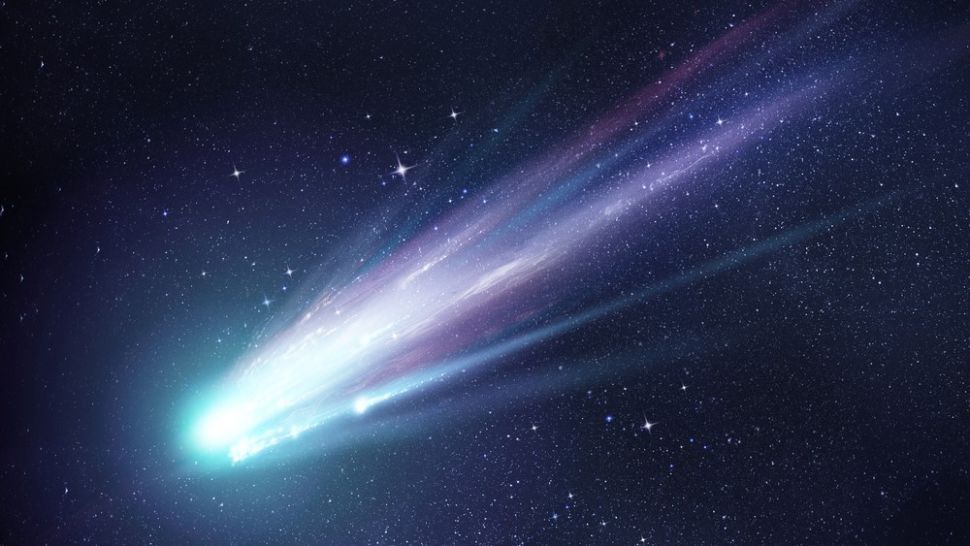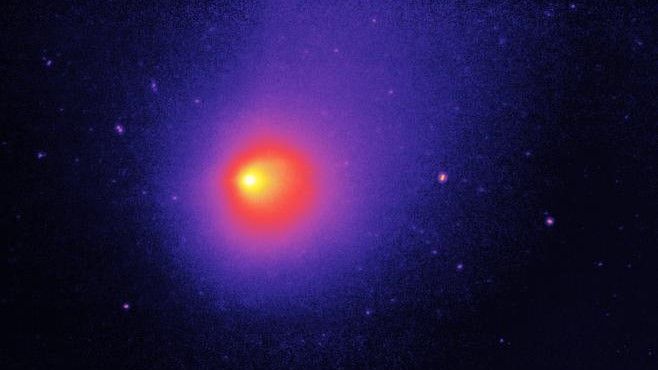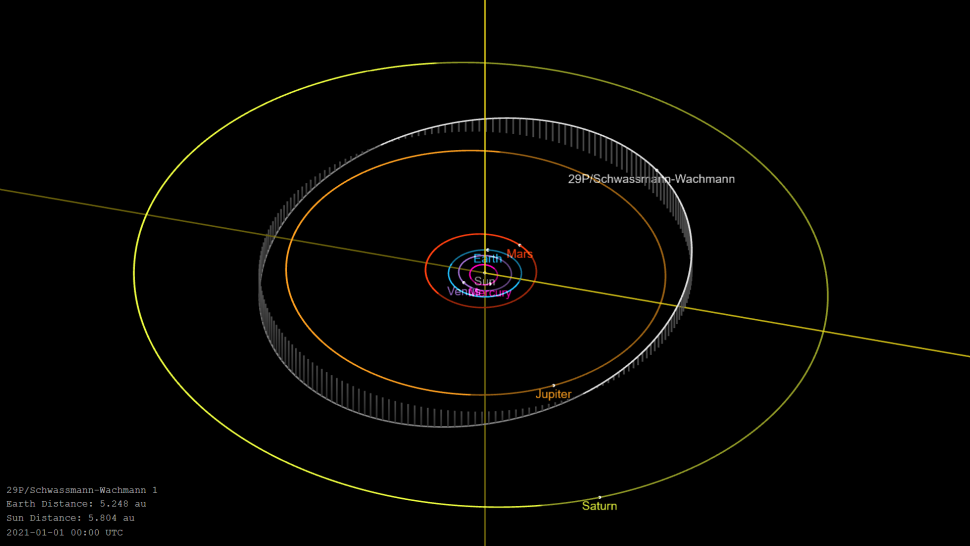In the solar system, a large outburst from an ice volcanic comet was discovered.
Astronomers observed a major eruption from a volcanic comet flying through the solar system, likely spewing more than 1 million tons of debris into space.
More than a million tons of gas, ice, and the “potential building blocks of life” have been brutally ejected into the solar system by a strange, volcanic comet.
It takes the unstable comet 29P/Schwassmann-Wachmann (29P) around 14.9 years to circle the sun and is about 37 miles (60 kilometers) wide. The solar system’s most active comet in terms of volcanic activity is thought to be 29P. According to NASA, it is one of around 100 “centaurs” comets that have been forced out of the Kuiper Belt, a ring of ice comets that lurks beyond Neptune, and into a closer orbit around the sun between Jupiter and Neptune.

According to Spaceweather.com, an amateur astronomer by the name of Patrick Wiggins noted a sharp rise in 29P’s brightness on November 22. According to the British Astronomical Association, further observations by other astronomers showed that this brightness rise was caused by a major volcanic outburst, the second greatest witnessed on 29P in the previous 12 years (BAA). A massive eruption in September 2021 was the biggest throughout this time.
According to Cai Stoddard-Jones, a doctorate student at Cardiff University in the UK who captured a follow-up photograph of 29P’s eruption, an explosion of this scale is “quite unusual.” It’s also challenging to explain why this one is so enormous.
According to BAA, there were two more minor explosions on November 27 and November 29.
In contrast to Earth’s volcanoes, which spew out scalding-hot lava and debris from the mantle, 29P spews out exceedingly chilly gases and ice. Cryovolcanism, or “cold volcanism,” is the name for this rare form of volcanic activity.
Cryovolcanic bodies, which also include a few other comets and moons in the solar system including Saturn’s Enceladus, Jupiter’s Europa, and Neptune’s Triton, have a surface crust around a mostly solid icy core, according to BAA astronomer Richard Miles(opens in new tab), who has investigated 29P. The frozen innards of the comets can sublime from solid to gas over time as a result of radiation from the sun, which leads to a rise in pressure below the crust. When the sun’s radiation damages the crust as well, pressure builds up, the outer shell cracks, and cryomagma erupts into space.

According to NASA experts, the cryomagma from comets like 29P is mostly made up of carbon monoxide and nitrogen gas, along with a few ice particles and liquid hydrocarbons that “may have given some of the basic elements from which life evolved on Earth.”
According to BAA, the ejecta from 29P’s most recent outburst has reached a distance of up to 34,800 miles (56,000 km) from the comet and is moving at up to 805 mph (1,295 kph). Miles said that the plume “likely included more than one million tons of ejecta.”
According to Spaceweather.com, images of the erupting comet also reveal that the explosion’s plume took the form of an erratic Pac-Man-like shape, which shows that the eruption began from a single point or region on the comet’s surface.
These findings support earlier studies that claim 29P’s eruptions are correlated with its rotation. According to Miles and Stoddard-Jones, the comet’s slower spin leads to uneven solar radiation absorption, which in turn leads to the outbursts. The comet’s 57-day rotating cycle has so far been matched by explosions, according to the researchers.
Researchers think that a cycle based on 29P’s orbit around the sun governs its most violent outbursts. According to Miles, there were many significant eruptions discovered between 2008 and 2010, and since then, there have been two enormous explosions. By the end of 2023, at least one more significant eruption from 29P is therefore anticipated, he continued.

In contrast to most other comets, which approach the sun during a particular period of their orbits, 29P has a largely circular orbit, which means it never approaches the sun much closer than its average distance, which makes it less clear how this longer eruption cycle is taking place, according to Stoddard-Jones.
Since its discovery in 1927, 29P has mostly gone unnoticed by the astronomy world, but Miles noted that as fresh information about its extraordinary volcanic activity becomes available, it is beginning to be given more attention. Clearly, research into 29P will provide fresh information.
Do not forget to share your opinion with us to provide you with the best posts !




0 Comments